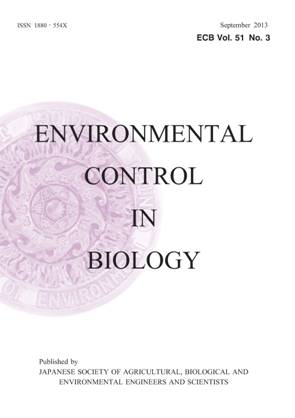58 巻, 4 号
Environmental Control in Biology
選択された号の論文の6件中1~6を表示しています
- |<
- <
- 1
- >
- >|
原著
-
2020 年 58 巻 4 号 p. 91-97
発行日: 2020/10/01
公開日: 2020/10/28
PDF形式でダウンロード (746K) -
2020 年 58 巻 4 号 p. 99-104
発行日: 2020/10/01
公開日: 2020/10/28
PDF形式でダウンロード (913K) -
2020 年 58 巻 4 号 p. 105-113
発行日: 2020/10/01
公開日: 2020/10/28
PDF形式でダウンロード (1203K) -
2020 年 58 巻 4 号 p. 115-121
発行日: 2020/10/01
公開日: 2020/10/28
PDF形式でダウンロード (1498K) -
2020 年 58 巻 4 号 p. 123-130
発行日: 2020/10/01
公開日: 2020/10/28
PDF形式でダウンロード (313K)
短報
-
2020 年 58 巻 4 号 p. 131-135
発行日: 2020/10/01
公開日: 2020/10/28
PDF形式でダウンロード (114K)
- |<
- <
- 1
- >
- >|
